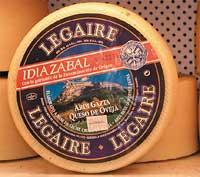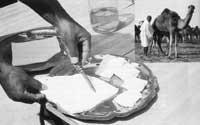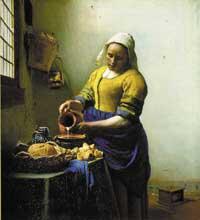Camel cheese to fight hunger
2001/10/28 Kortabarria Olabarria, Beñardo - Elhuyar Zientzia

With camel hair, carpets, shops and clothes are made to protect against the inclemencies of time; camel manure is used as fuel; water cans with camel skin are made; and camel meat and camel milk are an excellent complement of food in places where it is very difficult to obtain food from the cultivation of the earth.
Excellence, camel meat and, above all, camel milk, are hardly conservable for a long time, as they are wasted by heat. In the case of camel milk, the work carried out by the United Nations Food and Agriculture Organization (FAO) will somehow solve the problem. How? Milk converted into cheese.
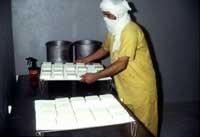
Camel milk is very sweet to drink, and they take it there where there are camels, but it is not so easy to transform it into cheese, because it costs you much to cook.
At the base, for the preparation of the cheese, it is necessary to cook the milk to obtain the curd and the serum. The new methods of elaboration have managed to accelerate this process. To do this, they add ferment milk, a culture capable of producing lactic acid, and rennet. Thus, the separation of liquids and solids is faster.
"Making cheese with cow's milk, goat's milk or yak-milk is easy," says Jean-Claude Lambert, an expert in FAO's dairy products, for which we have all the technology. But with camel milk things change because it does not cook with the traditional rennet. About 5-6 years ago no one thought you could get camel cheese, but now we are able to do it."

Lambert himself, commissioned by FAO, has spent six years researching and experimenting in Tunisia and Saudi Arabia. The result of the work done by the FAO expert was the production of camel cheese, "adding calcium phosphate milk and vegetable rennet".
According to Claude Lambert, the discovery has great importance, since approximately half of the camel milk that is currently collected is discarded. It seems that in many cultures they only like fresh milk. Obviously, the elaboration of cheese would allow the conservation of milk and the sale of it.
And in practice what?

After successful theoretical work, FAO has also made efforts to put it into practice. A few years ago, a camel cheese making system was launched in a dairy farm in Mauritania. He provided technical assistance to the dairy and the necessary tools for making cheese. Two types of cheese were made and put on sale, but a good response from the customers was not achieved. "The people of Mauritania don't have a habit of eating cheese," says Nancy Abeiderrahmane, owner of dairy, "and since it's not cheap, we didn't sell it much.
However, the aim of making the cheese was to take advantage of the extra milk, so we decided to start exporting the milk." They found administrative problems, since there is no procedure for the study of camel cheese in international regulations. This limited the market, so they stopped making cheese in the dairy.
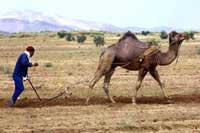
These are accounts of two years ago because Mrs. Abeiderrahmane has no intention of resigning herself. In its dairy farm it produces 13,000 liters of camel, cow and goat milk daily, has about 800 suppliers and has made camel cheese again. In the capital of Mauritania, Nuakchott, sells camel cheese daily. "We are now making a single type of cheese. It is not easy to do, we hardly take advantage and we hardly have market, but it is excellent. In addition, camel cheese is rich in vitamins and in cholesterol and lactose, so it is also good for people allergic to dairy."
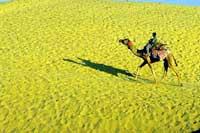
Although the passage is small, the future can be fruitful. In fact, since last year, the process of curing of camel milk has been simplified. All thanks to the product Camifloc. The FAO has taken out the camiflocs, a product made with substances that are collected to obtain camel milk. This product is being distributed in small packages and have already managed to leave out of Mauritania to Mali and the United Arab Emirates. "Recently," says Lambert, "we have tested in Niger. We have spent two days teaching how to make cheese and at that time have been able to start producing." According to the FAO expert, if the technique of making camel cheese is extended, nomadic peoples can live better.
Published in 7K.

Gai honi buruzko eduki gehiago
Elhuyarrek garatutako teknologia



